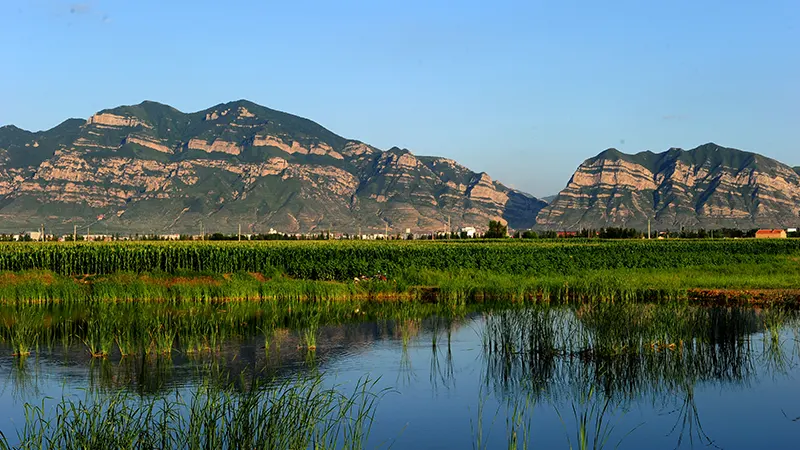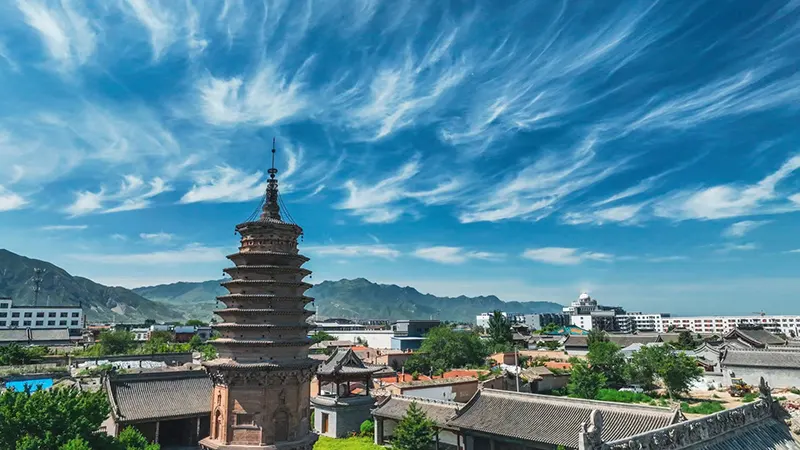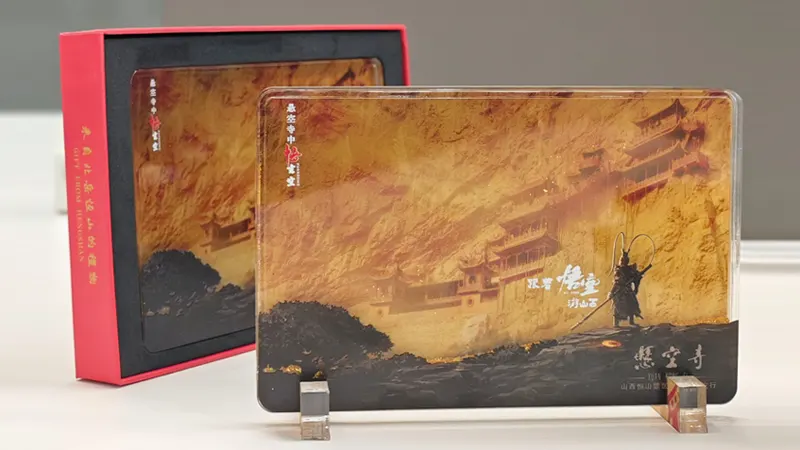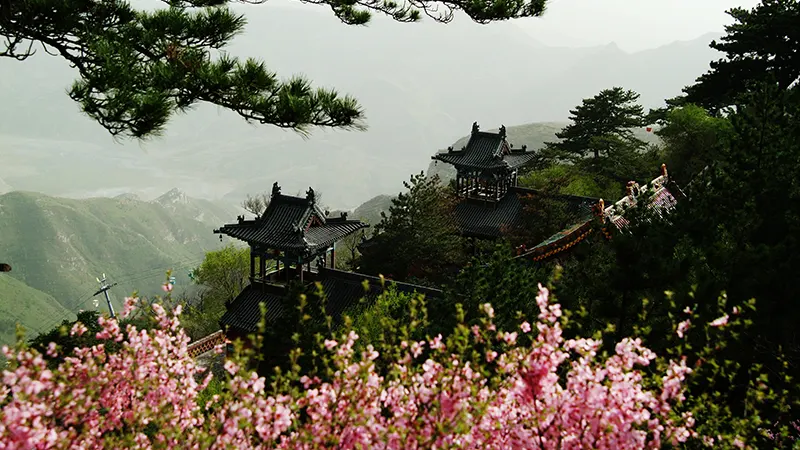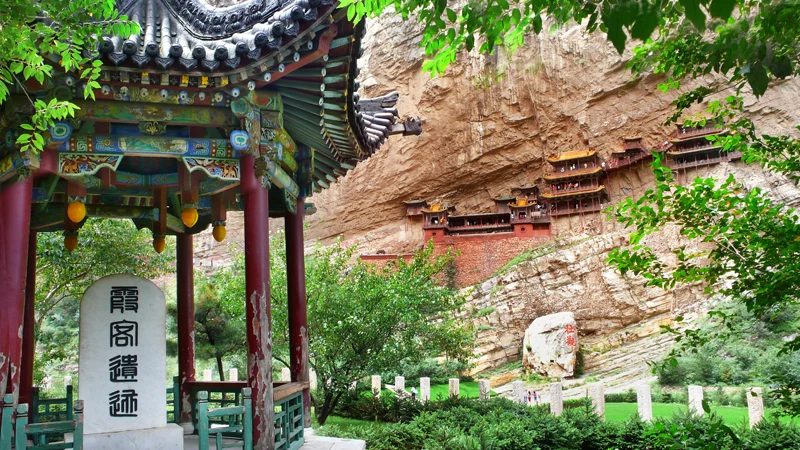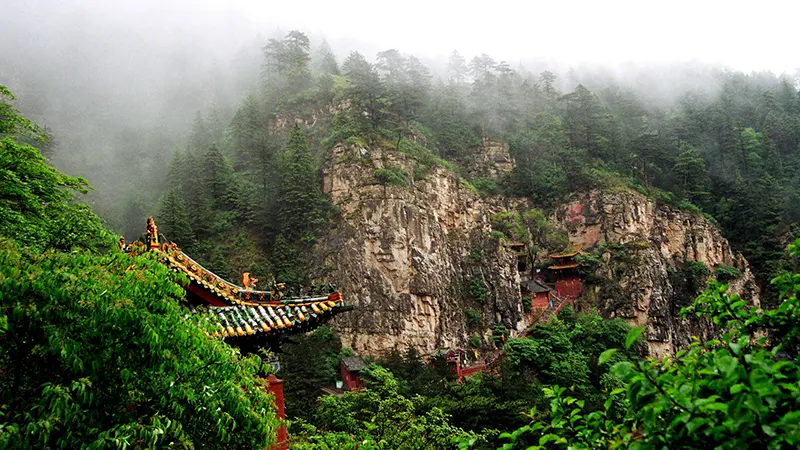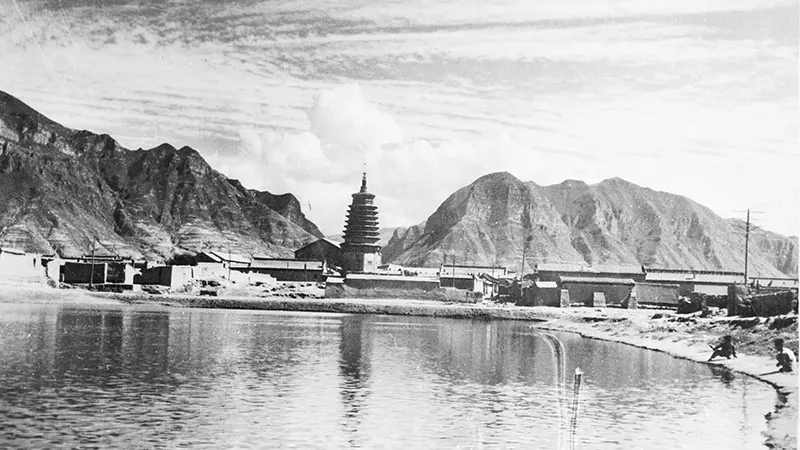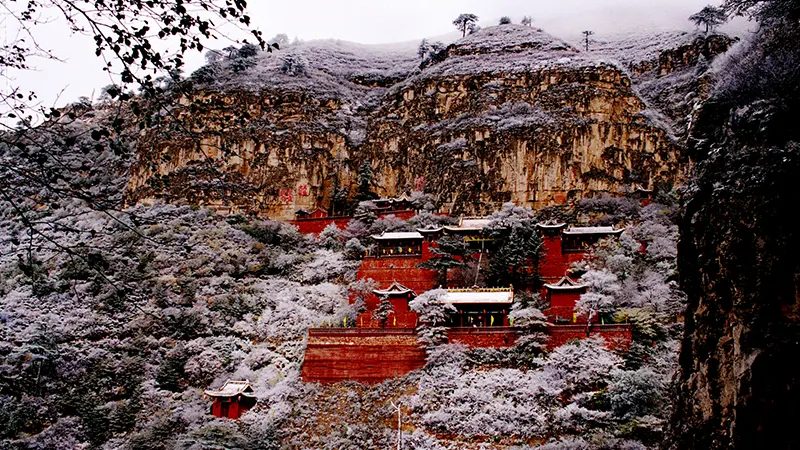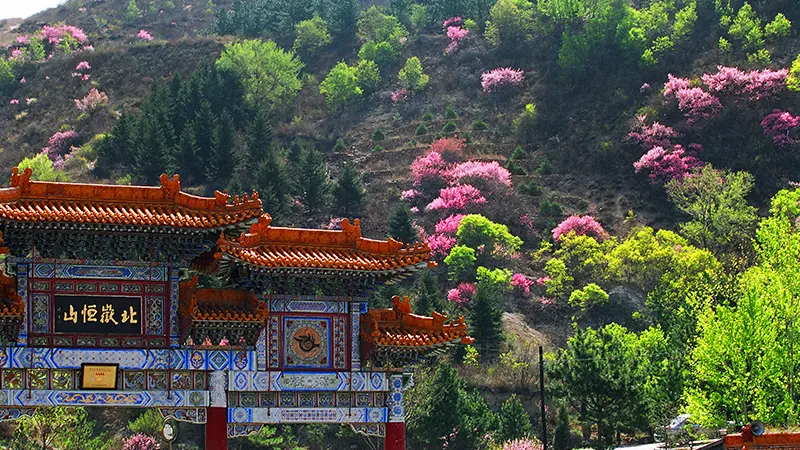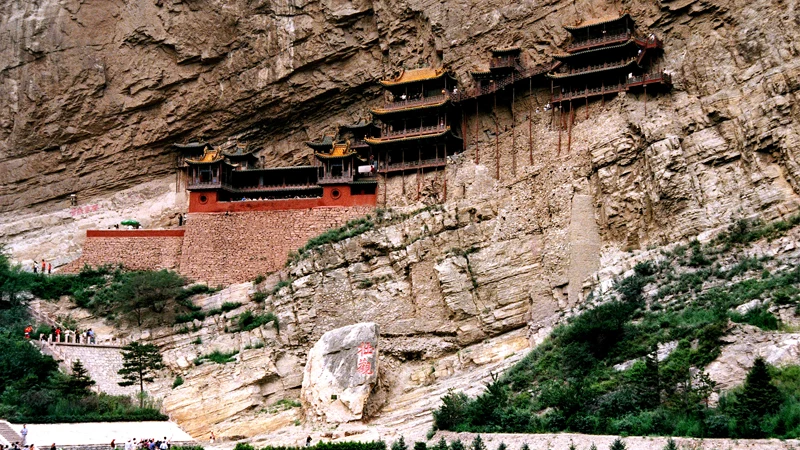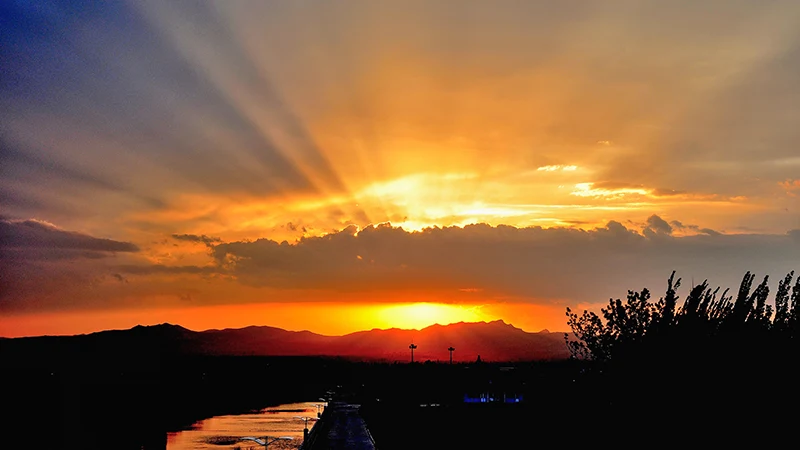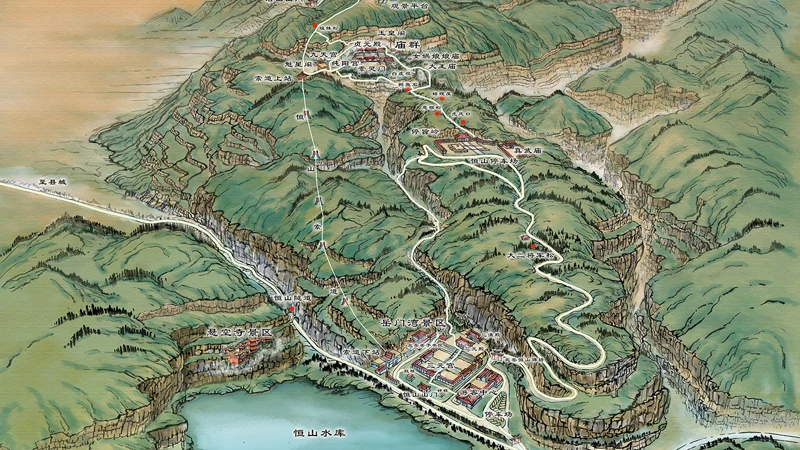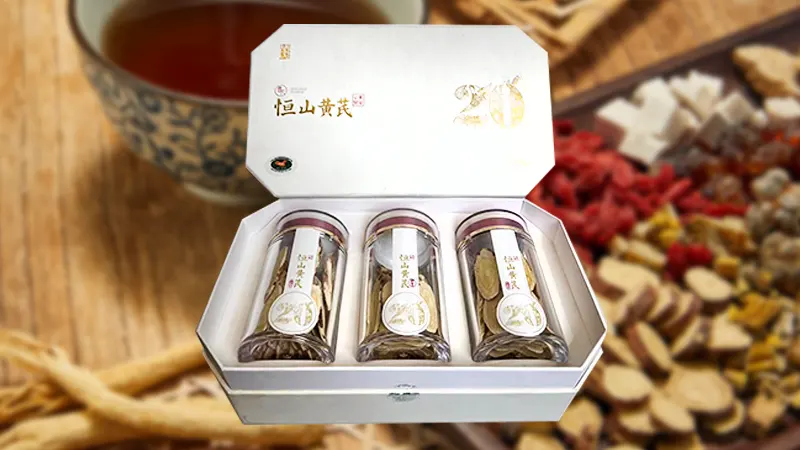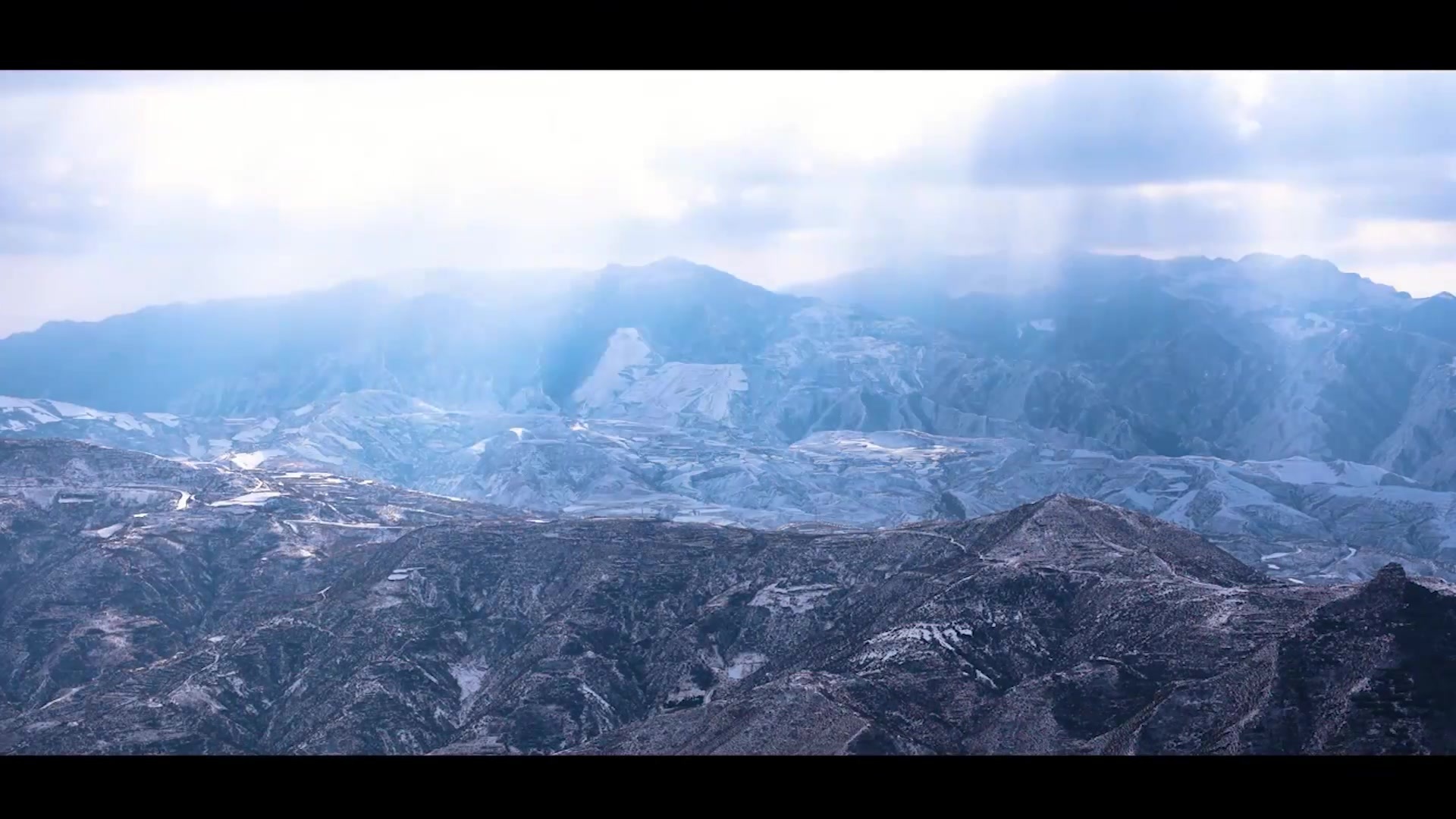Research on the large characters on the outer walls of the Yong'an Temple and other matters
Publish Time:
2025-03-14 13:03
Source:
The Yong'an Temple is a national cultural relic protection unit, located in the city of Hunyuan County, Datong City, Shanxi Province.
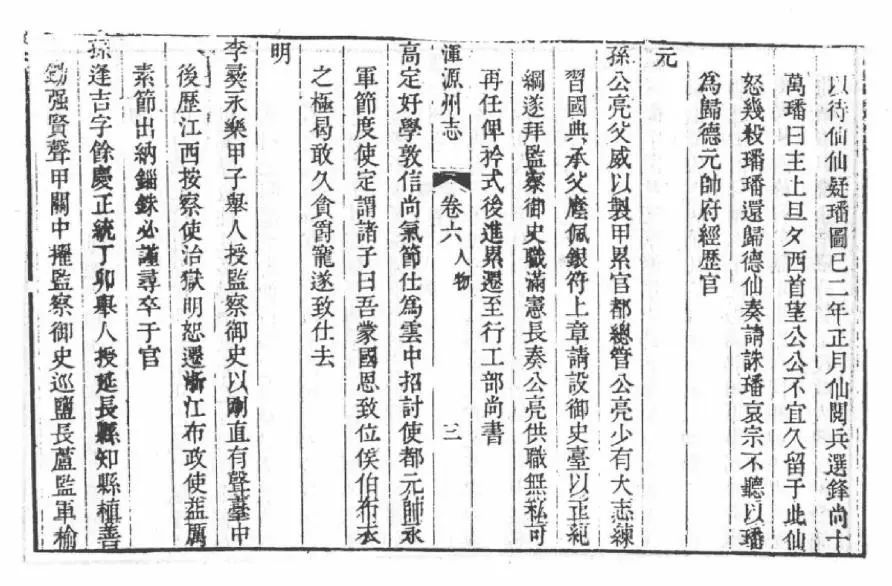
▲Volume Six, "Biographies," of the Qianlong Edition of the Hunyuan County Gazetteer
- Gao Ding was a studious and honest man with strong principles. He served as the Yunzhong Pacification Envoy, Grand Marshal, and Jiedushi of Yong'an Army. Ding told his son, “I have received the emperor's grace and risen to this position. As a commoner, I dare not long covet such honors.” He then retired from office.
I. The Mystery of Gao Ding's Construction of Yong'an Temple
Yong'an Temple, a national heritage site, is located in Hunyuan County, Datong City, Shanxi Province. Historical records indicate that Yong'an Temple was initially built during the Jin Dynasty and the original temple was destroyed by fire. In the early Yuan Dynasty, Gao Ding (styled Yong'an Jushi), the Yunzhong Pacification Envoy, Grand Marshal, and Jiedushi of Yong'an Army, and a native of Hunyuan, and his son Gao Zhongdong rebuilt the temple on the original ruins, naming it "Yong'an Chan Temple." In 1243, the father and son respectfully invited Abbot Guiyun to establish the temple; in 1289, Gao Zhonghui and Gao Yan, grandsons of Gao Ding, respectively the prefectural magistrate and Xuanwu General, invited Abbot Xi'an, the great-grandson of Abbot Guiyun, to build the five bays of the Great Liberation Gate, and to store scriptures and teach Dharma. In 1315, Gao Pu, Gao Ding's grandson, a government official and former magistrate of Hunyuan County, constructed the Hall of Dharma Transmission, thus establishing the basic layout of the temple with its three courtyards, which were of extremely high Specification.
Of course, there are different folk legends in Hunyuan about Gao Ding's construction of the temple. Gao Ding, a native of Liyu Village in Hunyuan County during the early Yuan Dynasty, legend says that he built the temple, in reality, it was a palace, with the intention of establishing a military base and claiming the throne—a claim that is still widely circulated in Hunyuan even today, hundreds of years later. Especially the descendants of the Gao family of Liyu Village generally believe that Gao Ding was their ancestor, and Yong'an Temple was built by this ancestor with the intention of building a palace to become king.
According to the Qianlong Edition of the Hunyuan County Gazetteer: “The tomb of Grand Marshal Gao Ding is located twenty li southwest of the city.” The extant Gao Clan Genealogy in Liyu Village was first compiled in the twentieth year of the reign of Emperor Kangxi by the tenth-generation scholar Gao Zongcheng. The founding ancestor in the genealogy is Gao Zheng, a Ming Dynasty figure. According to the preface of the Gao Clan Genealogy: “Tracing back the Gao clan, from the Tang Dynasty scholar Shiji Weng residing in Shandong, and later Zhou Weng, who served as an official in Gaoping Pass, moved to Hongtong County. During the Yuan Dynasty, Ding Weng, styled Yong'an, served as the Yong'an Army Pacification Envoy and Grand Marshal, and moved to Dongwei Mao Village west of Hunyuan County in Datong Prefecture, Shanxi Province. In the Ming Dynasty, our ancestor Zheng Weng moved to Liyu East Village, Jingli Shijia (Jia) civilian register. As for those who moved to other places and traveled to distant lands, they are far and difficult to trace. The genealogy of Liyu's clan is compiled so that future generations can read it.” Judging from the Gao Clan Genealogy, due to the lack of specific genealogical records before the founding ancestor Gao Zheng, it is still difficult to see a clear connection between the Liyu Gao clan and Gao Ding, but the genealogy records that Gao Ding was their ancestor, and folk legends also say so. During the wars between the Yuan and Ming dynasties, most villagers fled their homes to avoid the fighting. Were the Liyu Gao clan descendants of Gao Ding who escaped and returned to their homeland after social stability? This seems to be difficult to clarify.

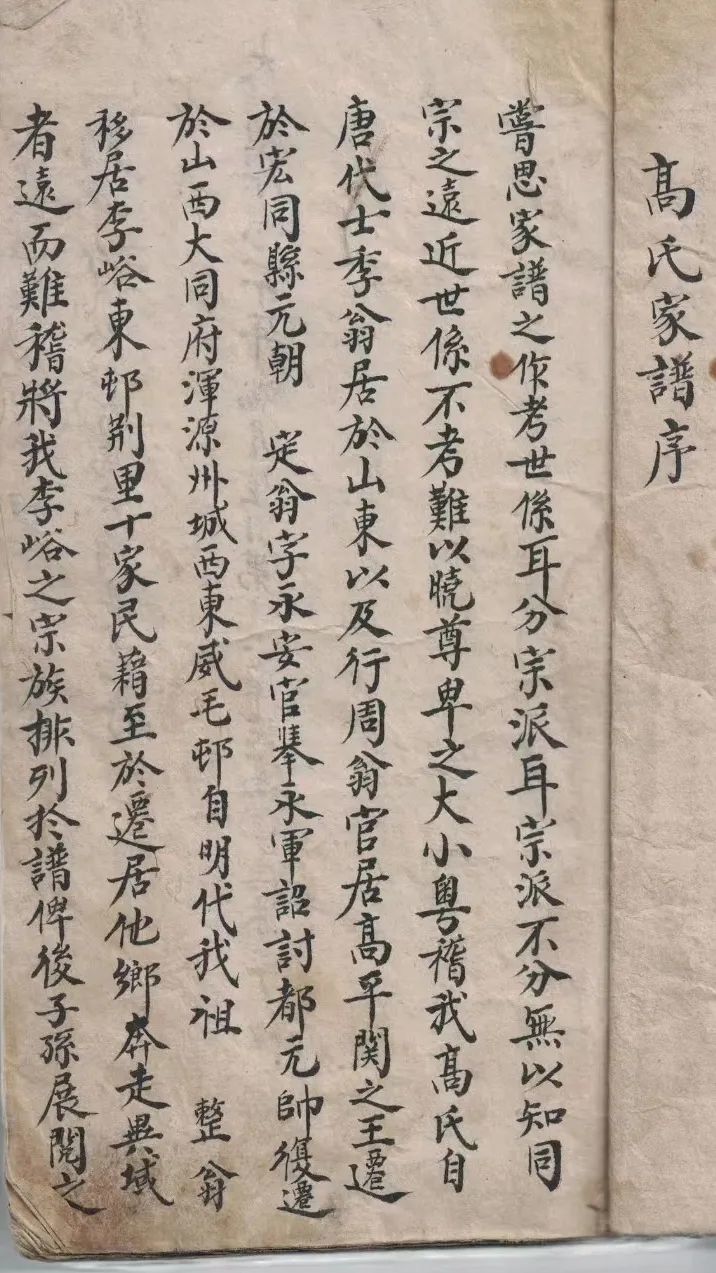
▲Liyu Gao Clan Genealogy, first compiled by Gao Zongcheng during the Kangxi era
Liyu Village is mainly populated by the Gao and Mu clans, each accounting for nearly half of the population, and there are some smaller surnames, including the Yuan clan. The Yuan clan are descendants of the Northern Wei imperial clan who changed their surname; the Mu clan are descendants of the Xianbei nobility who changed their surname. In fact, the Gao clan of Liyu should also be a branch of the Xianbei descendants, as can be seen from their appearance and temperament. From this perspective, the genealogical records and folk sayings may be the exact facts.
Is it possible that Gao Ding initially built a palace instead of a temple? In the early years of the Yuan Dynasty, Gao Ding and his son began construction on the site of the Jin Dynasty temple, but it was never completed. Only in 1243 did they respectfully invite Abbot Guiyun to preside over the expansion. Why didn't they invite a Buddhist monk at first but built it themselves? Was there a deeper meaning to this unusual move? This is somewhat suspicious. Unless the intention was indeed to build a palace, not a temple, it would be unusual to build a temple without inviting a high monk to do so. Moreover, for someone as important as Gao Ding, such an approach is clearly unconventional. In 1289, Gao Ding's descendants built the five bays of the Great Liberation Gate, storing scriptures and teaching the Dharma, with Nestorian features in the temple halls; until 1315, Gao Ding's grandson Gao Pu built the Hall of Dharma Transmission. Why, in a main temple, starting with Gao Ding and his son's reconstruction, was the main hall, which should have been built first, not built until seventy or eighty years later? This is also a thought-provoking question, could it be that they were waiting for an opportunity to build a palace? The main hall is covered with glazed tiles; the main slope is mainly yellow glazed tiles, while the east and west sides and the back slope are mainly blue glazed tiles. For a non-royal temple, this is clearly unconventional. Why is this? Volume Eight, “Temples and Shrines,” of the Qianlong Edition of the Hunyuan County Gazetteer records: “Yong'an Temple used yellow tiles, which was against regulations. However, since an imperial throne was set up in the hall, and civil and military officials offered congratulations there, it was deemed appropriate. Therefore, it was done according to the people's request.” Volume Nine, “Record of the Reconstruction of Temples and Schools,” (author: Wan'an of the Ming Dynasty), when listing outstanding historical figures of Hunyuan, calls “Gao Ding's faithfulness and righteousness.” What do the words recorded by Hunyuan prefect Gui Jingshun, who compiled the Qianlong Edition of the Hunyuan County Gazetteer, and the words written by Wan'an mean? It's still worth pondering. After all, the Gao Clan Genealogy records that among their ancestors there was once a “King of Gaoping Pass.” Perhaps Gao Ding and his descendants were indeed generations of extraordinary heroes who did not follow the usual path!
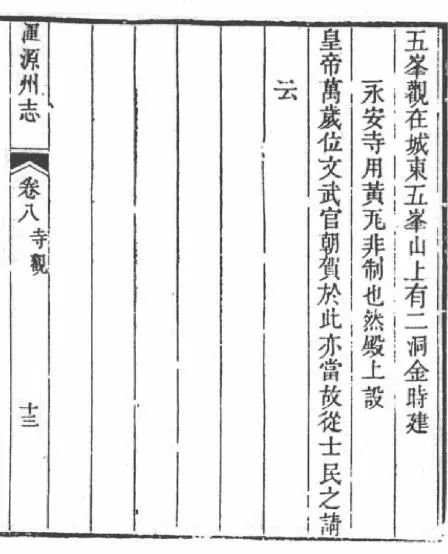
▲Volume Eight, "Temples and Shrines," of the Qianlong Edition of the Hunyuan County Gazetteer
- "Yong'an Temple used yellow tiles, which was against regulations. However, since an imperial throne was set up in the hall, and civil and military officials offered congratulations there, it was deemed appropriate. Therefore, it was done according to the people's request."
II. The Mystery of the Large Characters on the Outer Walls of the Palace
There are three sets of large characters on the outer walls of Yong'an Temple, respectively on the south wall of the Hall of Dharma Transmission: "莊、嚴"; on the north wall of the Heavenly King Hall: "法、相"; and on the north wall of the Hall of Dharma Transmission: "虎、嘯、龍、吟".
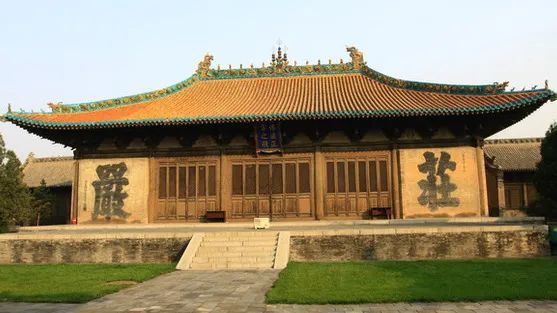
Group A: 莊 嚴
"莊" and "嚴" are respectively carved on the outer walls of the east and west slightly recessed sections of the front wall of the Hall of Dharma Transmission. Each character is 376 cm high and 250 cm and 275 cm wide respectively, very eye-catching. The inscription at the top has a long oval pattern with "Unequaled Elegance" carved inside, and below it is "Summer of Renwu Year." Below the inscription is "Inscribed by Duan Shida of Longshan, Taiyuan," followed by two seals, one "Duan Shida's Inscription" and the other "Longshan Yuexi."

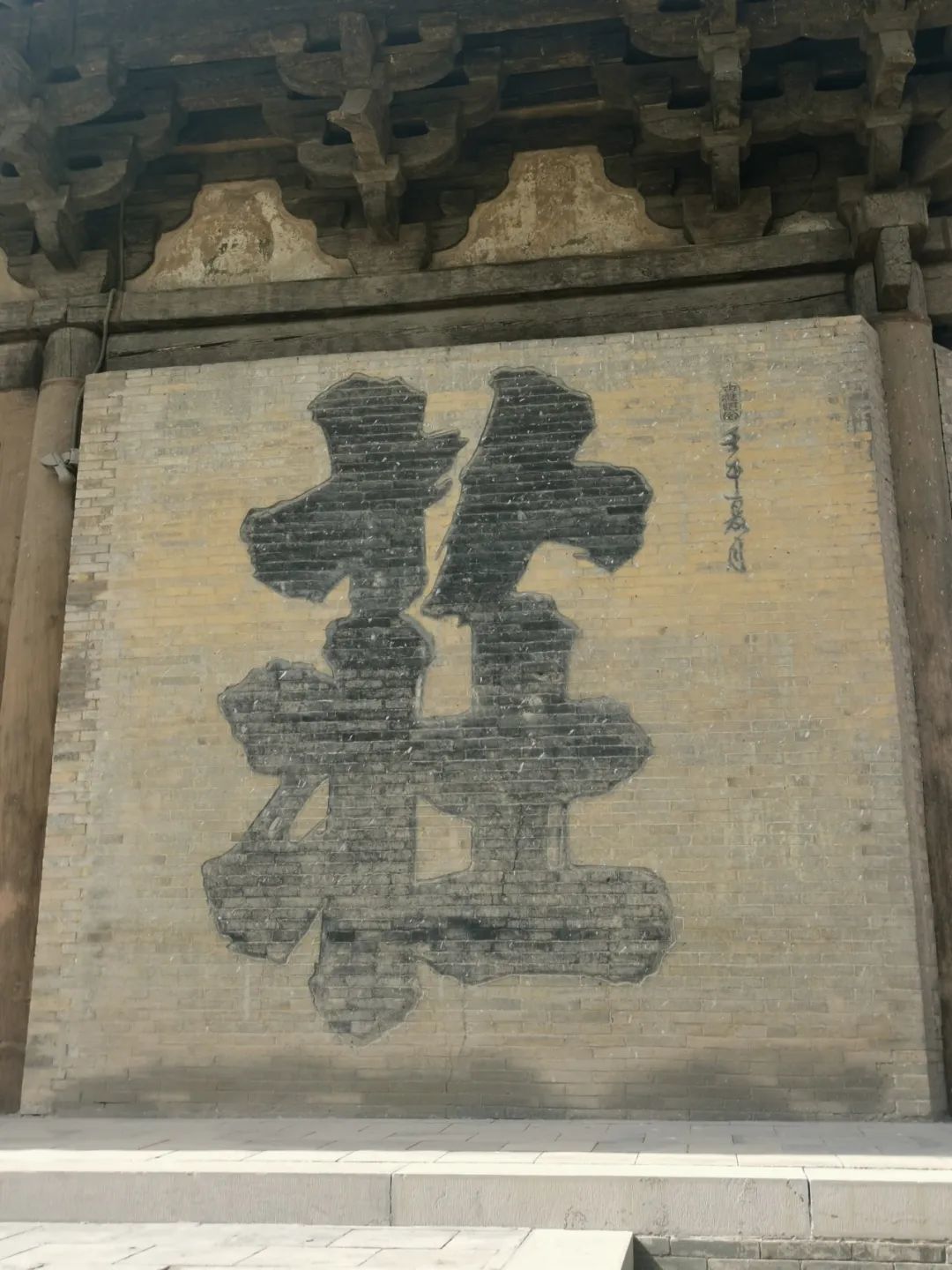
Regarding the creation date and author of these two characters, Mr. Zhang Jiande, a scholar of history and literature and former director of the Yong'an Temple Cultural Relics Management Office, described in his book "Yong'an Temple Murals" that the inscription year should be the first Renwu year after the completion of the main hall (1315), namely 1342, written by the abbot Si Zu Longshan Yuexi. According to this conclusion, the inscription of such magnificent "莊嚴" characters on the outer wall of the main hall 27 years later is awe-inspiring. It further highlights the temple's majestic demeanor, fully demonstrating Si Zu's extraordinary momentum, and is admired by the world.
Dr. Hou Tao, a researcher of history and literature, has also discussed the calligraphy and creation of these two characters. In his article "Yong'an Temple's "莊嚴" and the "Cun Jin Ba Bu Fa" in (Xue'an Zi Yao)", he states that the writing method of such large characters on walls is the "Cun Jin Ba Bu Fa", which originated in the Tang Dynasty and flourished in the Jin and Yuan Dynasties. He also details that the "Xue'an Zi Yao" clearly states: "Generally, characters less than four feet can be written with a grass brush. Characters over five feet must be written using this cloth method, and characters from one foot to two zhang can be written in this way." It seems that this is indeed the case. To write characters over five feet tall, one would need an extremely large brush, which would be difficult for ordinary people. Using the strength of one's hand to directly transmit the intention of one's mind to the writing on the cloth should be the most appropriate method.
I remember that in the 1970s, it was popular to paint propaganda slogans on the outer walls of streets, such as: "Our education policy is...", "Criticize Lin, criticize Kong...", "Dig deep holes, store grain widely...", etc. These slogans were also relatively large, but at that time, most of these characters were painted with a paintbrush in the style of artistic calligraphy, which is substantially different from written calligraphy. At best, they only have "rhyme" but not "spirit". It's basically the same as the countless "demolition" characters and circles on the streets today, lacking any artistic value.
I remember seeing an article earlier that said these large characters were written using a projection method. It means that after writing characters of a certain size, they were placed at a high place, and a lamp was placed above them to project them onto the ground, making the characters larger. When I saw it, I felt that this statement was too far-fetched, as it would at least cause the proportions of the characters to be distorted. I thought it was impossible, but at that time, there was no convincing explanation. Now, Dr. Hou Tao has finally solved the mystery.
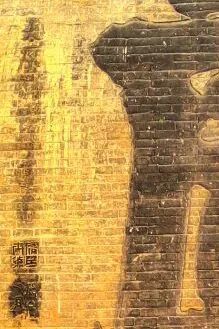
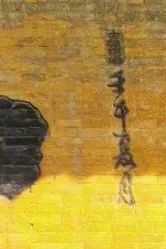
Dr. Hou Tao also speculated on when the two characters "莊嚴" were written. From 1315, when the main hall was built, to 1780, there were eight Renwu years. He believes that those without year names are possibly Jianwen 4 and Jiajing 1. The possibility of it being Jianwen 4 (1402) is greater. Dr. Hou Tao also researched who wrote the two characters "莊嚴". After checking the materials, he found that only one person was recorded as "Duan Shida". This person served as the Luyi County Magistrate in Jiajing 37 (1558), a supervisor student from Pingyang. Therefore, if it was written by him, it could only be the Renwu year of Wanli 10 (1582), which contradicts the absence of a year name.
So, who exactly wrote the two characters "莊嚴"? Dr. Hou Tao believes that if it was written by Yuexi Jueling in the second year of Zhizheng, it would obviously contradict the inscription "Taiyuan Longshan Duan Shida". It is illogical for a monk to write his secular name instead of his monastic name. It seems that Dr. Hou Tao's article does not have a clear conclusion on the time and author.
I believe that it is more likely that it was written by the monk Si Zu Yuexi Jueling. Although his inscription of a secular name violates the rules and the omission of the year name is inappropriate, we should realize that monks are also human beings. They were not born as monks. As individuals, who doesn't have passionate youth? Who doesn't have the ambition to dedicate their lives to a great cause? Perhaps it was just the wrong time, or the wrong path. When he wrote these two characters in the second year of Zhizheng, Monk Yuexi should have been over fifty years old, and his spirit had already been sublimated to emptiness. Writing the monastic precept "莊嚴" and leaving a secular name may be just a commemoration of the past. Moreover, such a high monk may be more aware of the vicissitudes of the world and more willing to get close to the world and save the world. Just like Master Xingyun, the higher the monk, the more approachable they are to ordinary people. As for why he didn't write the year name if it was indeed written by him, his feelings and thoughts may only be known to Monk Yuexi Jueling himself, after all, his secular name "Shida" was not achieved, and he entered the monastic order.
Who and when did they write it? Perhaps it will remain an eternal mystery.
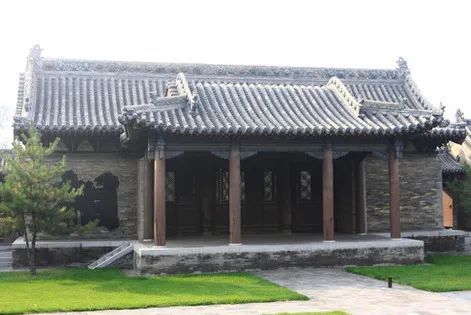
Group B: Dharma Characteristics
The two characters "法" and "相" are respectively inlaid on the east and west sides of the outer wall (north wall) behind the Heavenly King Hall, originally echoing the two characters "莊嚴" in the Chuanfa Zhengzong Hall, making the temple even more brilliant. Only the "相" character on the east side remains, and the missing character on the west side is inferred by Mr. Zhang Jiande to be "法".
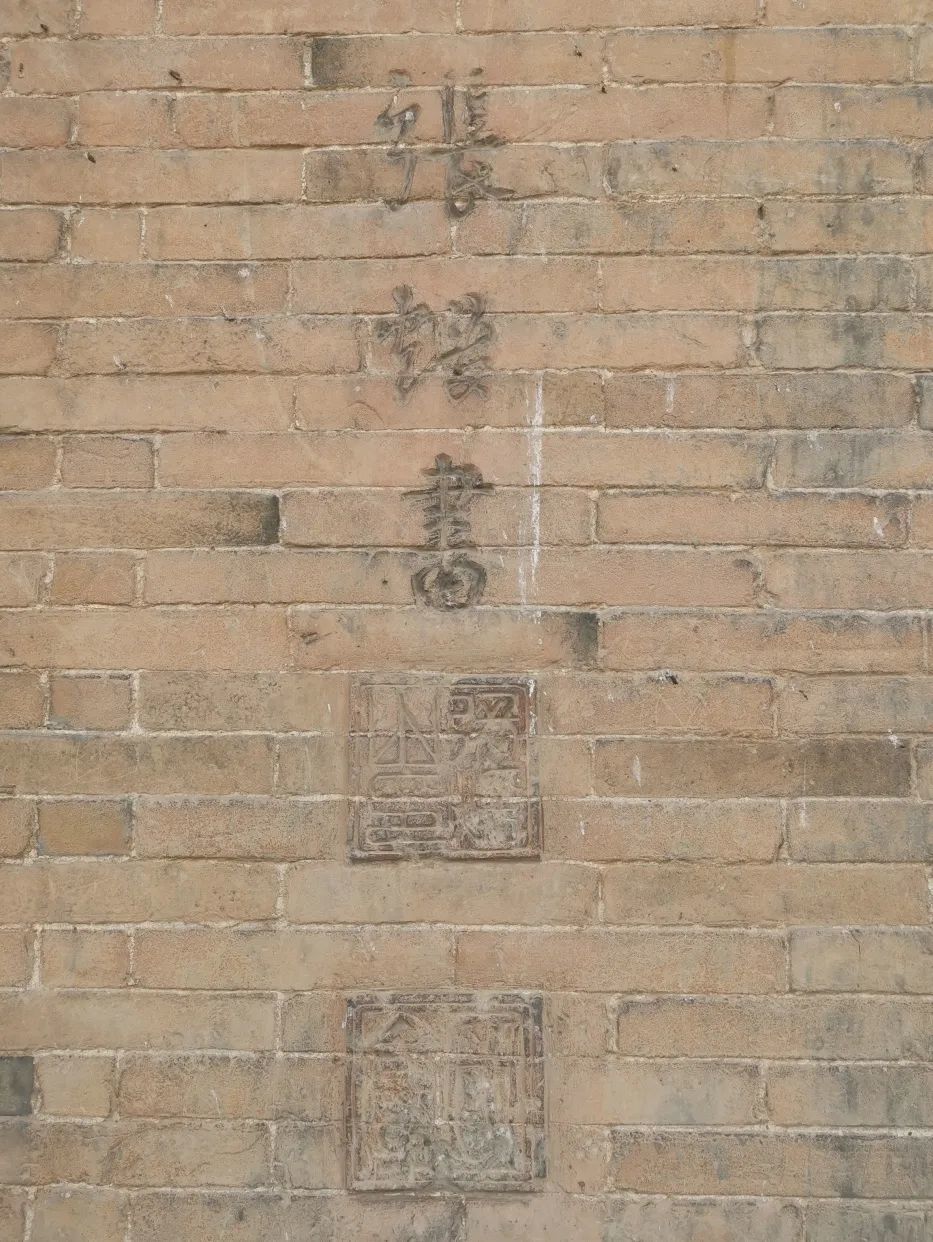
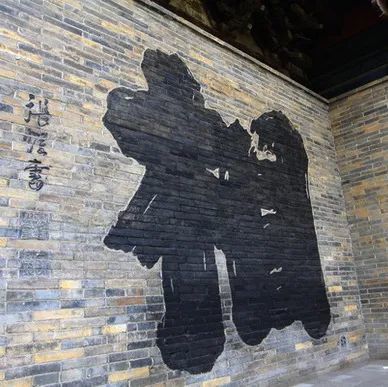
On the east side of the outer wall behind the Heavenly King Hall, the inlaid character "相" is 255 cm high and 275 cm wide, with the inscription "張煖書". Below it are two seals, one engraved with "張煖之印" and the other with "□□". On the west side of the outer wall behind the Heavenly King Hall, there should have been the character "法", matching the character "相" to form a pair, with "法相" corresponding to "莊嚴". This character no longer exists due to the destruction of the wall.

Group C: Tiger's Roar, Dragon's Song

The four characters "虎", "嘯", "龍", and "吟" are respectively inlaid on the outer wall behind the Chuanfa Zhengzong Hall, arranged from west to east. The heights of the characters are 378 cm, 384 cm, 372 cm, and 362 cm respectively, and the widths are 302 cm, 301 cm, 283 cm, and 341 cm respectively. The inscription has a leaf-shaped seal at the top, with "克己" engraved in relief, and another line engraved in intaglio with "大清乾隆上章困敦終皋五月"; below the inscription is "張煖書", and below it are two seals, one engraved with "張煖之印" and the other with "明□".
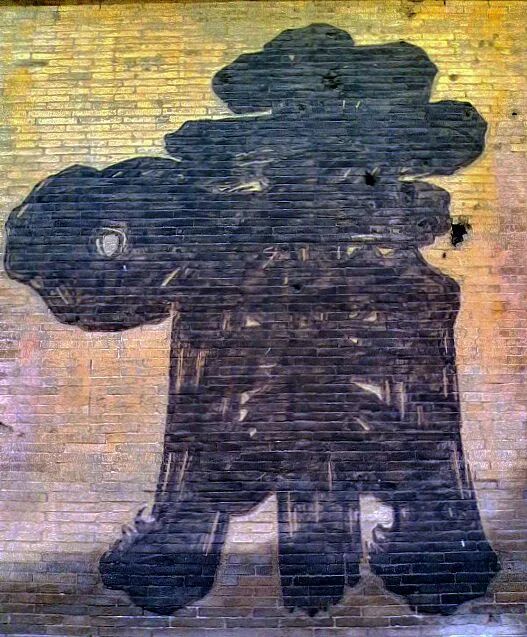
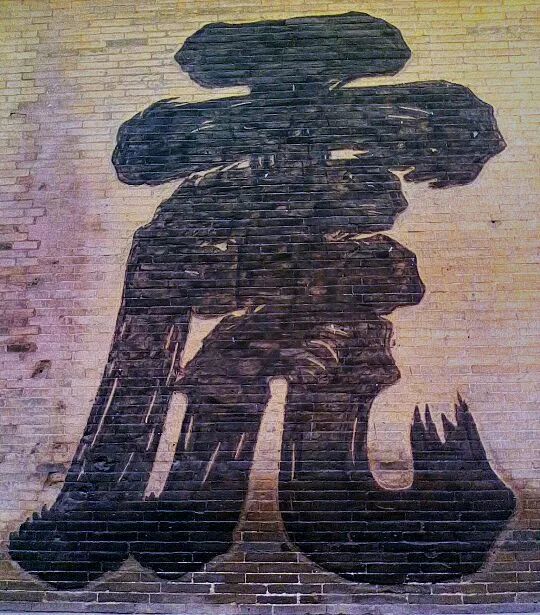
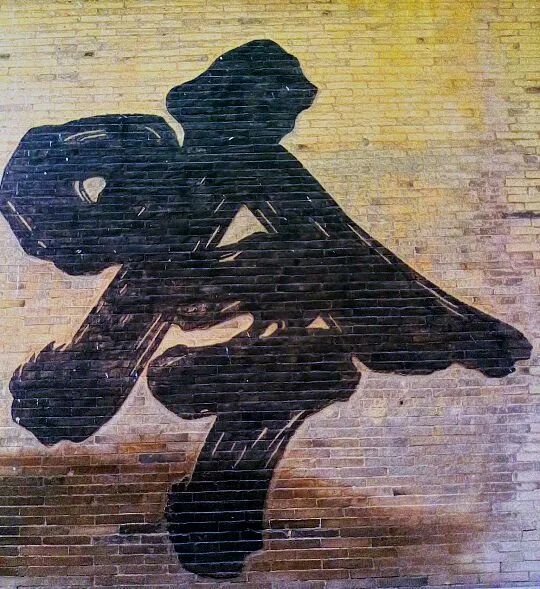
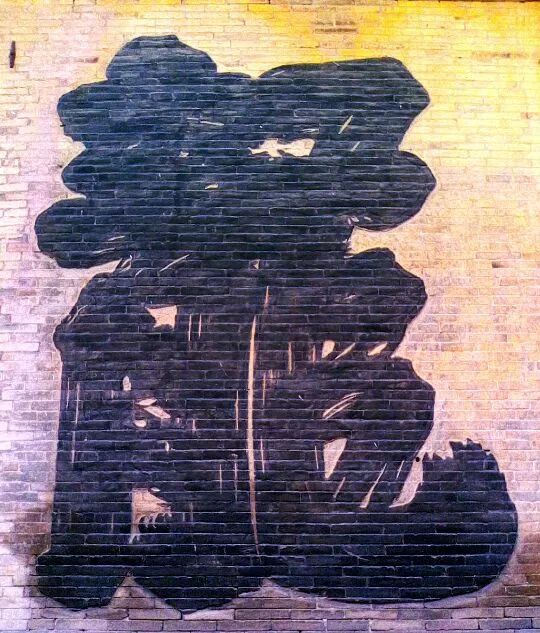
In his book "Yong'an Temple Wall Paintings," Mr. Zhang Jiande recounts that the work was completed in the transmission hall platform in May of the Gengzi year of the Qianlong reign of the Qing Dynasty. I believe that the "Erya Shitian" states that Tai Sui is "in Geng called Shangzhang" and "in Zi called Kundun." "Shangzhang Kundun" refers to the Gengzi year. "Gaoyue" is another name for May, meaning "the month of swamps." "Daqing Qianlong Shangzhang Kundun Zhonggao May" means that the year is Shangzhang Kundun, and the month is Zhonggao, that is, May of the Gengzi year of the Qianlong reign of the Qing Dynasty (May 1780), and there is no intention of completing it on the platform of the transmission hall. This statement seems to go beyond the usual conventions of inscriptions, and there is a suspicion of adding unnecessary details. Shangzhang Kundun Zhonggao May, then another May is repeated, it should be a clear intention. "Zhonggao May" and "Gengzi year 1780" are actually similar in usage. The latter is common usage, and the former is also a clear intention. Of course, this is just my humble opinion. I hope that those who know better will correct me.

|
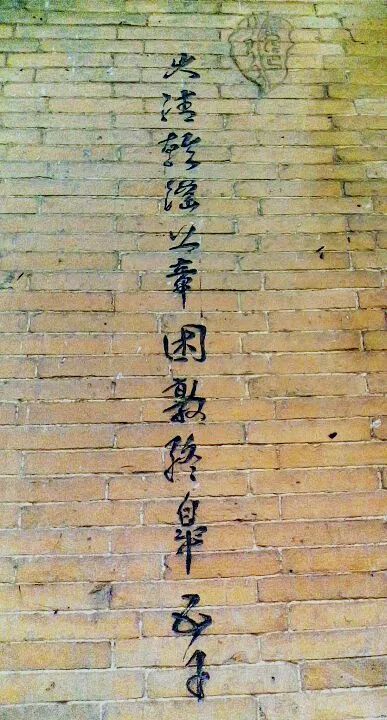
|
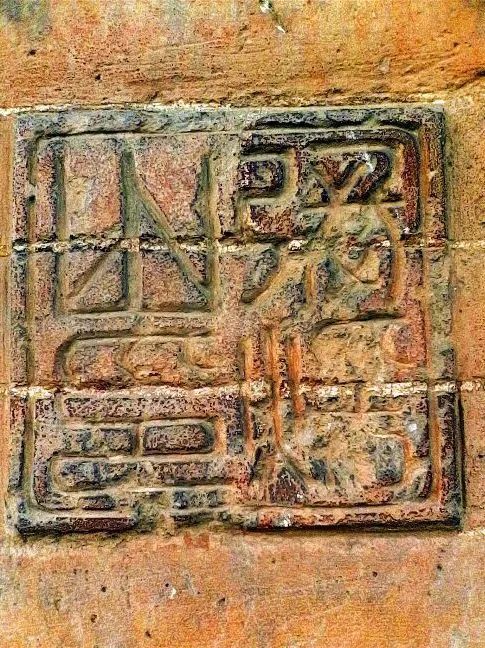
|
III. The Mystery of Zhang Nuan's Origins
Zhang Nuan was from Haojiazhai Village, Hunyuan Prefecture, during the Qianlong reign of the Qing Dynasty. He was an ancestor of mine. According to the existing Haojiazhai "Zhang Clan Genealogy," Zhang Nuan was the fifth-generation member of the Zhang clan with a recorded name. The first ancestor in the genealogy was Zhang Guangshi from the Kangxi era. The fifth generation had four brothers: Zhang Shu, Zhang Lu, Zhang Yan, and Zhang Nuan. According to the Qianlong edition of the "Hunyuan Prefecture Gazette," Zhang Shu was a jiansheng (a student recommended for official examination), and Zhang Yan was a wujü (military scholar) of the Dingmao imperial examinations. According to the clan genealogy, Zhang Lu was a wén shēng (a scholar). Zhang Nuan has no record of official achievement but is described in the genealogy as follows:"A martial arts master, whose formal name was Nuan, and childhood name was Wulu, he taught martial arts and had high moral character. He trained imperial examination scholar, Xing Wenxing, two juren (provincial examination scholars) Zhang Qian and Zhang Yong, and countless xiucai (county examination scholars). He was also skilled in writing large characters. The four characters ‘Tiger’s Roar Dragon’s Song’ that he inscribed on the back wall of Yong'an Temple in the prefecture city were moved to the village. The inscription of ‘Buddhist Realm’ at the temple were praised by the people."
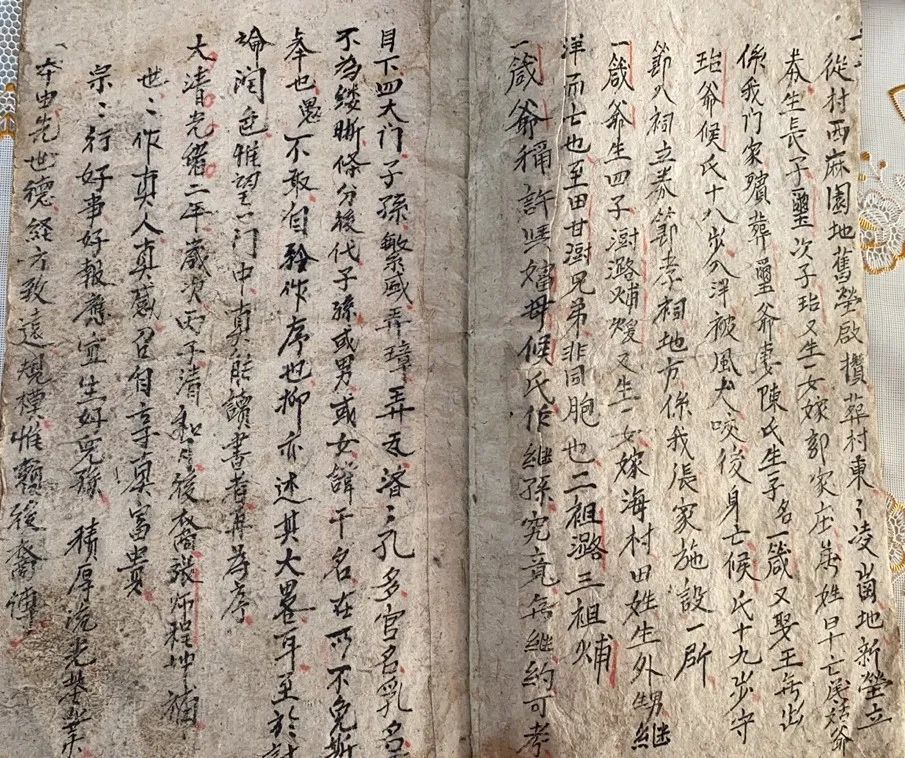
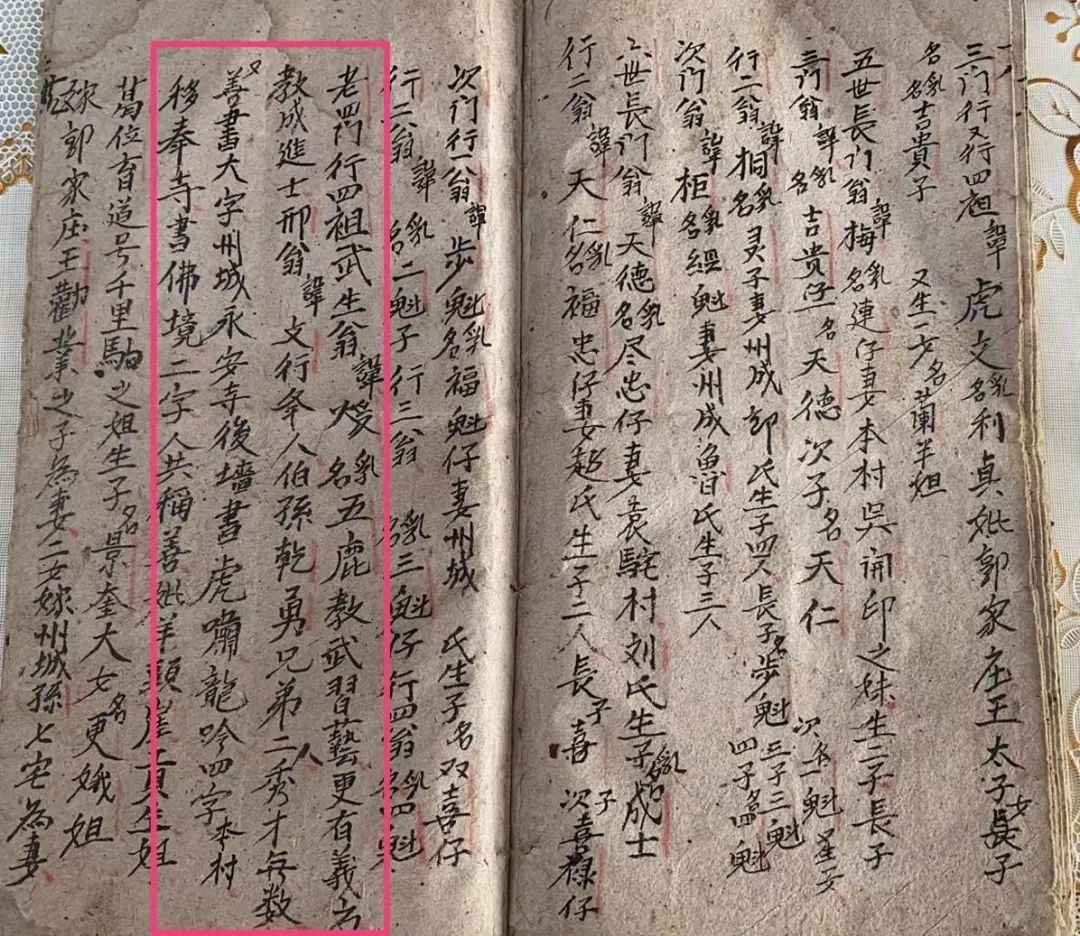
▲Data from Haojiazhai Zhang Clan Genealogy, Guangxu Era Supplement by Zhang Shi Cheng
Analyzing the existing records of Zhang Nuan's deeds in the clan genealogy, he was likely a well-known martial arts instructor skilled in large-character calligraphy. Among those he trained was one jinshi (imperial examination scholar) in martial arts, two juren (provincial examination scholars) in martial arts, and countless xiucai (county examination scholars) in martial arts. "Xing Wenxing" refers to the elder Xing Wenxing. According to the Guangxu edition of the "Hunyuan Prefecture Continued Gazette," Xing Wenxing was the first wujinshi (military jinshi) of Hunyuan Prefecture in the Qing Dynasty; "a jiaqing jiwei scholar, a military commander of Wuchang Prefecture, Hubei Province, promoted to deputy military commander of Shinnan Prefecture." "Zhang Qian and Zhang Yong" were the grandsons of Zhang Shu’s elder brother. According to the clan genealogy and the Guangxu edition of the "Hunyuan Prefecture Continued Gazette," Zhang Qian and Zhang Yong were the eldest and second sons of Zhang Jingyun. They were both martial arts juren (provincial examination scholars), and Zhang Jingyun was the son of Zhang Nuan's elder brother Zhang Shu, making Zhang Qian and Zhang Yong Zhang Nuan's grandnephews. Zhang Jingyun was also extraordinary. He was Zhang Nuan's nephew and according to the Guangxu edition of the "Hunyuan Prefecture Continued Gazette," was a Jiaqing tribute student and Jingshan tutor, while the clan genealogy records him as a lin gongsheng (student supported by government stipend) and Xiuzhi Lang (an official title). Because Jingshan Academy was exclusively for the children of the imperial household, there are legends calling him a "teacher of the emperor." Furthermore, Zhang Nuan's son, Zhang Jingkui, was recorded in the clan genealogy as a tribute student, and the "Hunyuan Prefecture Continued Gazette" records him as a Jiaqing tribute student.
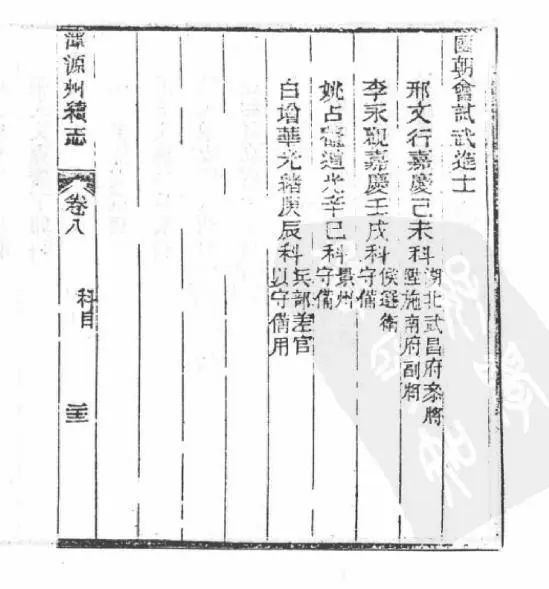
▲Volume 8, "Subjects," of the Guangxu edition of "Hunyuan Prefecture Continued Gazette"
Qing Dynasty Imperial Examination Military Jinshi
- Xing Wenxing, Jiaqing Jiwei examination, military commander of Wuchang Prefecture, Hubei Province, promoted to deputy military commander of Shinnan Prefecture.
According to the "Zhang Clan Genealogy," the four characters "Tiger’s Roar Dragon’s Song" were not directly inscribed by Zhang Nuan on the back wall of Yong'an Temple but were first written somewhere in the village and then moved to Yong'an Temple. How this was done is not recorded, remaining an unsolved mystery. Additionally, the record mentions that there should also be two characters written by Zhang Nuan at Yong'an Temple, but these are no longer extant, and where they were located or when they were destroyed remains unknown.
Another even bigger question is—Zhang Nuan was merely a locally renowned martial arts instructor. How did he manage to have his calligraphy "Tiger’s Roar Dragon’s Song" moved to Yong'an Temple? Neither a monk nor a prefectural official, how could he have his calligraphy work moved to the temple? Yong'an Temple was rebuilt in 1760 (the twenty-fifth year of Qianlong's reign) and completed in 1762 (the twenty-seventh year of Qianlong's reign). The year 1780, when these four characters were written, was nearly 20 years after the reconstruction. Since it was not during the rebuilding period, how could it be possible to have moved it and inscribed the two sets of four characters "Buddhist Form" and "Buddhist Realm" at that time? Who arranged this and under what circumstances? All this seems to have become an unresolvable mystery.
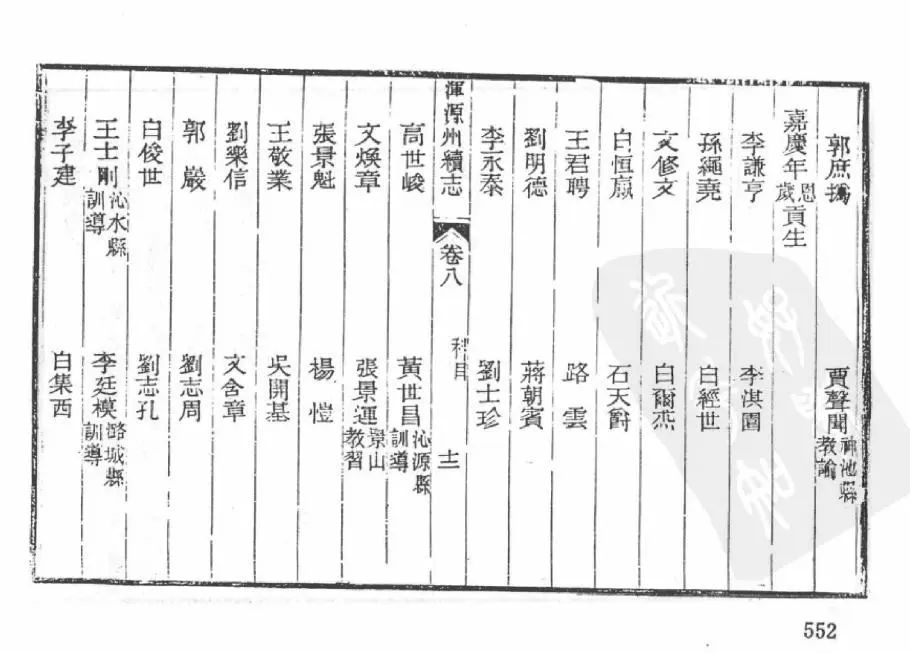
▲Volume 8, "Subjects," of the Guangxu edition of "Hunyuan Prefecture Continued Gazette"
Jiaqing Era En Gongsheng and Sui Gongsheng
- Zhang Jingyun, Jingshan Tutor, Zhang Jingkui
Given Zhang Nuan's abilities, why is there no record of his official achievements? What is the meaning of the inscription "Self-Cultivation" and "Ming□" in "Tiger’s Roar Dragon’s Song"? This again prompts much speculation and remains puzzling!
June 2023
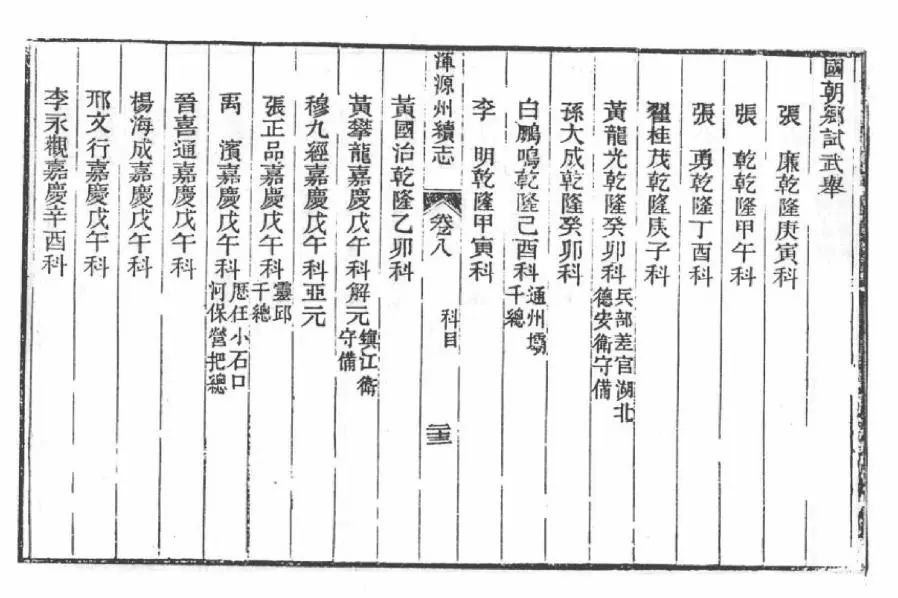
▲Volume 8, "Subjects," of the Guangxu edition of "Hunyuan Prefecture Continued Gazette"
Qing Dynasty Provincial Examination Military Scholars
Zhang Qian, Qianlong Jiawu Examination
Zhang Yong, Qianlong Dingyou Examination
Xing Wenxing, Jiaqing Wu Examination
Keywords:
Related News
Republic of China hemp mat treasure | Guiyou (1933) Deng Hengyue Ji (with poems and texts)
In today's ancient city of Hunyuan, when discussing well-preserved ancient residences, one must mention the "Ma Family Courtyard." The original owner, Ma Xi Zhen, has also gained attention, as if the person is known because of their residence.
Republican High Liangzuo | 1935 North Shanxi Field Trip Notes
In the spring of 1935, the Nationalist Government in Nanjing dispatched Shao Yuanchong, a member of the Central Executive Committee of the Kuomintang, and Zhang Ji, a member of the Central Supervisory Committee, to Shaanxi to pay homage to the Yellow Emperor's Mausoleum. After the ceremony, Shao Yuanchong went on an inspection tour of Northwest China, visiting Gansu, Qinghai, Ningxia, Inner Mongolia, and Shanxi. His secretary, Gao Liangzuo, accompanied him throughout the journey, recording their observations and experiences, which were subsequently published in major newspapers and generated significant public attention.
Republic of China, Jiang Weiqiao | 1918 Hengshan Mountain photo album
In September 1918, Jiang Weiqiao, a councillor of the Ministry of Education of the Beiyang Government, was ordered by the Ministry of Education to inspect the academic affairs in Shanxi Province. He took the opportunity to pay his respects at Mount Wutai and Hengshan Mountain. He departed from Beijing on September 21, first taking a train to Shijiazhuang, and then to Taiyuan; then he took a carriage to Mount Wutai and Hengshan Mountain; and finally returned to Beijing from Datong by train on October 13.
Shao Yuanchong of the Republic of China | Brief Record of the 1935 Northern Mount Taihe Expedition
In the spring of 1935, the Nanjing Nationalist Government dispatched Shao Yuanchong, a member of the Central Executive Committee of the Kuomintang, and Zhang Ji, a member of the Central Supervisory Committee, to Shaanxi to pay homage to the Yellow Emperor's Mausoleum. After the ceremony, Shao Yuanchong went on an inspection tour of Northwest China, departing from Xi'an on April 25 and subsequently visiting Gansu, Qinghai, Ningxia, Inner Mongolia, and Shanxi.
Chen Xingya's Travelogue of Yungang Grottoes and Hengshan Mountain in 1935, Republic of China
Between the September 18th Incident and the Marco Polo Bridge Incident, Chen Xingya held the idle post of council member of the Peiping Pacification Commission, staying at home and often traveling with friends to various famous scenic spots in China.


